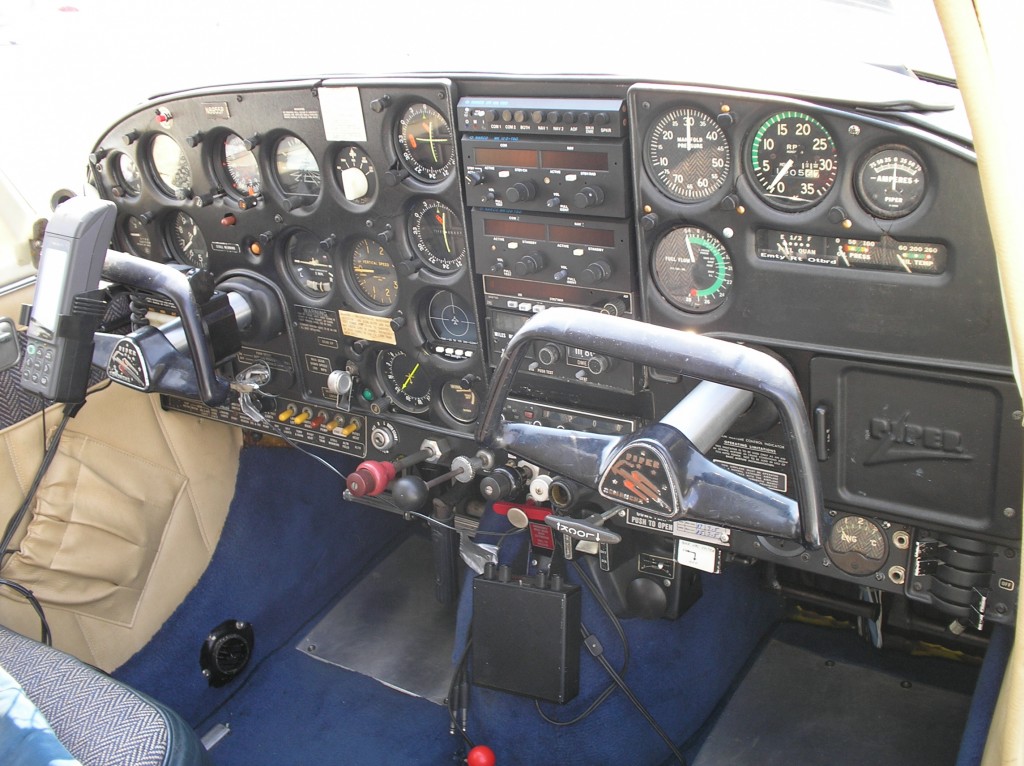
A few minutes ago I read a post on Google + from an acquaintance of mine. This fellow flies, as I do, but with rather more passion, I think. I mean in addition to flying, he’s been building an airplane in his garage. Yes, that speaks of passion. It’s an undertaking that takes years to accomplish. Learning to fly is something any reasonably intelligent person can accomplish in the span of a summer, but to fashion an aircraft with your own hands and tools? That is passion.
Anyway, he posted a short article about his flight yesterday, round trip from Raleigh to Asheville and back, on a day that was tailor-made for aviation; blue skies, gentle breeze, and no doubt a landscape rolling by beneath touched with brush-strokes of reds and yellows from the shift to autumn foliage. I smiled because I too spent yesterday absorbed in “flying”, and with my own kind of passion, but a bit different.
My yesterday was consumed with fixing my autopilot, which has never quite worked right in this airplane of mine; a wonderful “bird” which I’ve owned since the mid-1990’s. At times, it has demonstrated a willingness to work well, but never for two flights in a row, and for more than a few years now not even one flight in three. It came that way at point of purchase. I remember what the previous owner said about it when he was showing me my purchase. “How does this work?”, I asked, pointing to the autopilot control console. “Oh, that thing…”, said he, “ I can fly the plane better myself.” Yup, that was truth.
An autopilot is not a necessity in light aircraft; to have one in the plane is luxury, a frivolity even, if you never practice instrument flight. That’s flight where you enter and fly within clouds, of course. All an autopilot really does is permit a pilot to focus his attention elsewhere while the craft maintains a certain heading and altitude. Ok, it’s true that a modern autopilot interfaced with the right kind of navigation gear can also fly you all the way to where you’re going, without you doing much else than programming it.
Mine is very old school: it will hold a certain heading from the compass, and will also hold an altitude, sort of, within a hundred feet or so. It is rumored that it is capable of intercepting a course on a navigation radio, and then turning to and flying that course. Radical! In short, it is an archaic dinosaur. Even with these limitations, it would be a fine thing if it did those things CONSISTENTLY, and so I spent my day yesterday probing its deficiencies, in search of an answer to this question: why, dear God, please tell me WHY does it work well at times, but not at others?
I spent almost eight hours in and around my aircraft yesterday in pursuit of an answer to that question, and learned much, but not the answer. I may even be within a few more hours of having my answer, and will likely spend more time today. And yet more in the future, on this or other “old airplane” problems. Let me tell you something that surprised me as I sat with my feet up, after yesterday’s workshop time: it was fun. It was absorbing. And it put me in touch with an aspect of flying that I haven’t previously connected with.
I realized my friend’s joyous flight yesterday was only half of the equation, and that maintaining the craft, making it work, making it a bit better through effort (not just money spent), maybe even building it from the ground up, any or all of those, IS the other half.
